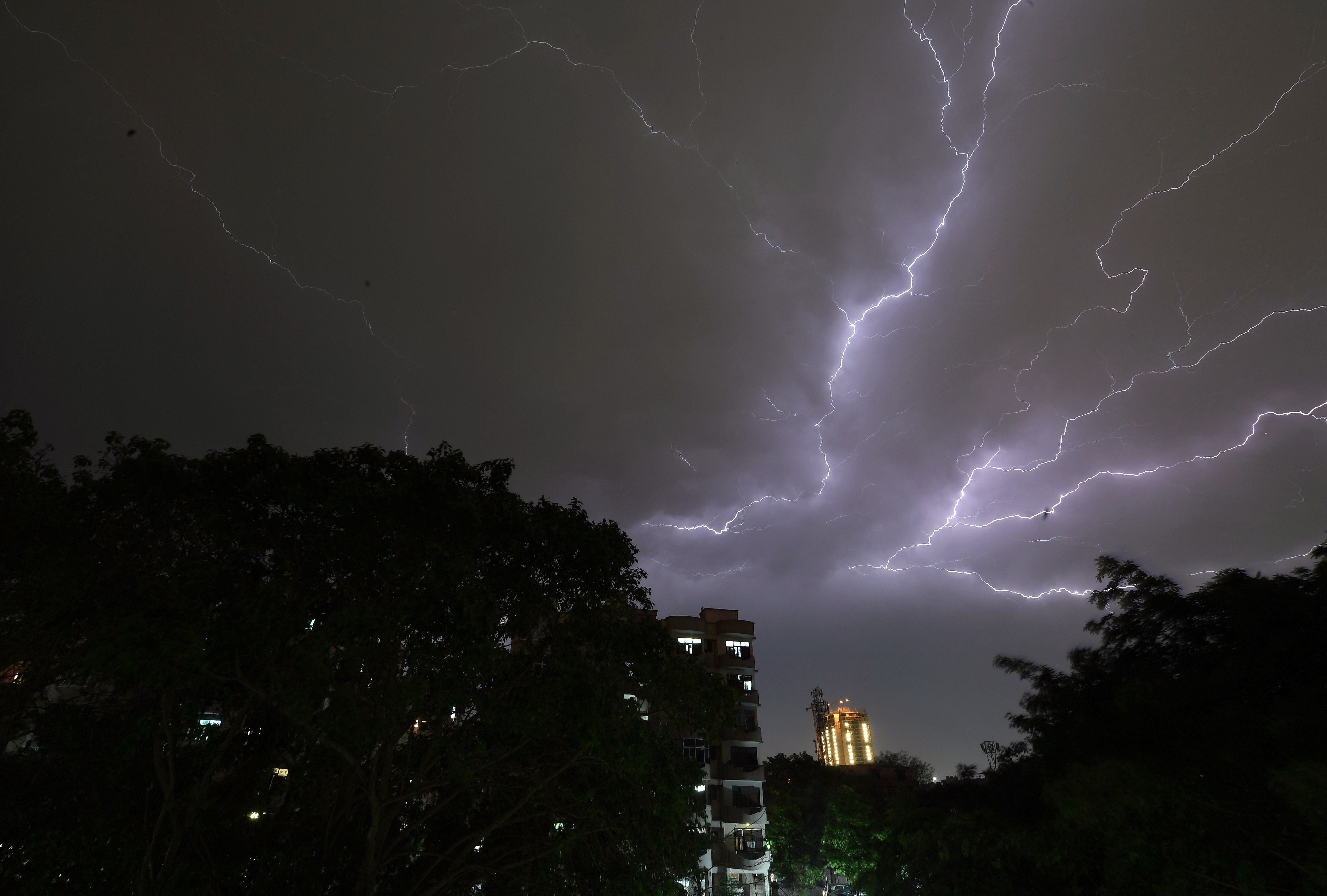‘Alarming’ rise in lightning strike deaths in India, scientists warn
Lightning strikes are becoming one of the leading climate-induced disasters in India
India is witnessing an alarming rise in lightning-related deaths, driven in part by the effects of climate change, according to a new study.
Researchers say that lightning strikes have become increasingly deadly in the South Asian country, with over 101,000 deaths recorded between 1967 and 2020 – nearly 1,900 each year.
Even though increasing awareness and urbanisation are expected to protect more people, the study shows that the last decade alone has seen a sharp uptick in fatalities.
This disturbing trend positions lightning as one of the leading climate-induced disasters in India.
While the total number of strikes wasn't directly measured, the data on fatalities paints a grim picture of lightning activity becoming more unpredictable and frequent across the country.
The average number of deaths per state has risen from 38 per year between 1967 and 2002 to 61 per year from 2003 to 2020, coinciding with India’s population growth to 1.4 billion people, the study, led by researchers at Fakir Mohan University in Odisha, says.
Monsoon season, stretching from June to September, typically brings much-needed rain to the subcontinent but also heightens the risk of lightning strikes, which are “becoming increasingly unpredictable”, the study says.
Scientists say that rising global temperatures contribute to this increase by creating conditions more conducive to lightning.
Higher temperatures lead to more water vapour in the atmosphere, which cools at higher altitudes and generates the electrical charges that spark lightning. This has made lightning strikes more common and more deadly.
India’s rural population is disproportionately affected. Most of the victims are working-class individuals, often sheltering under trees or in open fields when storms hit.
The lack of effective early warning systems and public awareness about lightning safety exacerbates the problem.

Despite advancements in meteorological technology, such as the installation of 129 lightning-detection sensors across the country, many of these systems fail to deliver timely warnings to those in harm’s way.
The states of Jharkhand and Bihar, in eastern and central India, are among the hardest hit by lightning strikes. These regions experience unique climatic conditions where hot, dry air from the northwest meets moist easterly currents, creating an environment ripe for lightning.
Earlier research also suggests that air pollution may also play a role in increasing lightning activity. Aerosols, such as dust and pollution particles, may enhance the friction between particles that generate lightning, leading to more frequent strikes.
In response to the growing threat, 16 of India's 36 states and union territories, including Bihar and Jharkhand, have classified lightning strikes as state disasters.
This designation allows for compensation payments of 400,000 rupees (about $4,766) to the families of those killed. While this financial support helps, it does little to prevent the loss of life in the first place.
Researchers say there is a pressing need for improved safety measures, better early warning systems, and increased public awareness to mitigate the impact of lightning in India.
A study showed that a degree of rise in temperature can lead to a 12 per cent increase in lightning strikes.
Join our commenting forum
Join thought-provoking conversations, follow other Independent readers and see their replies
Comments
Bookmark popover
Removed from bookmarks